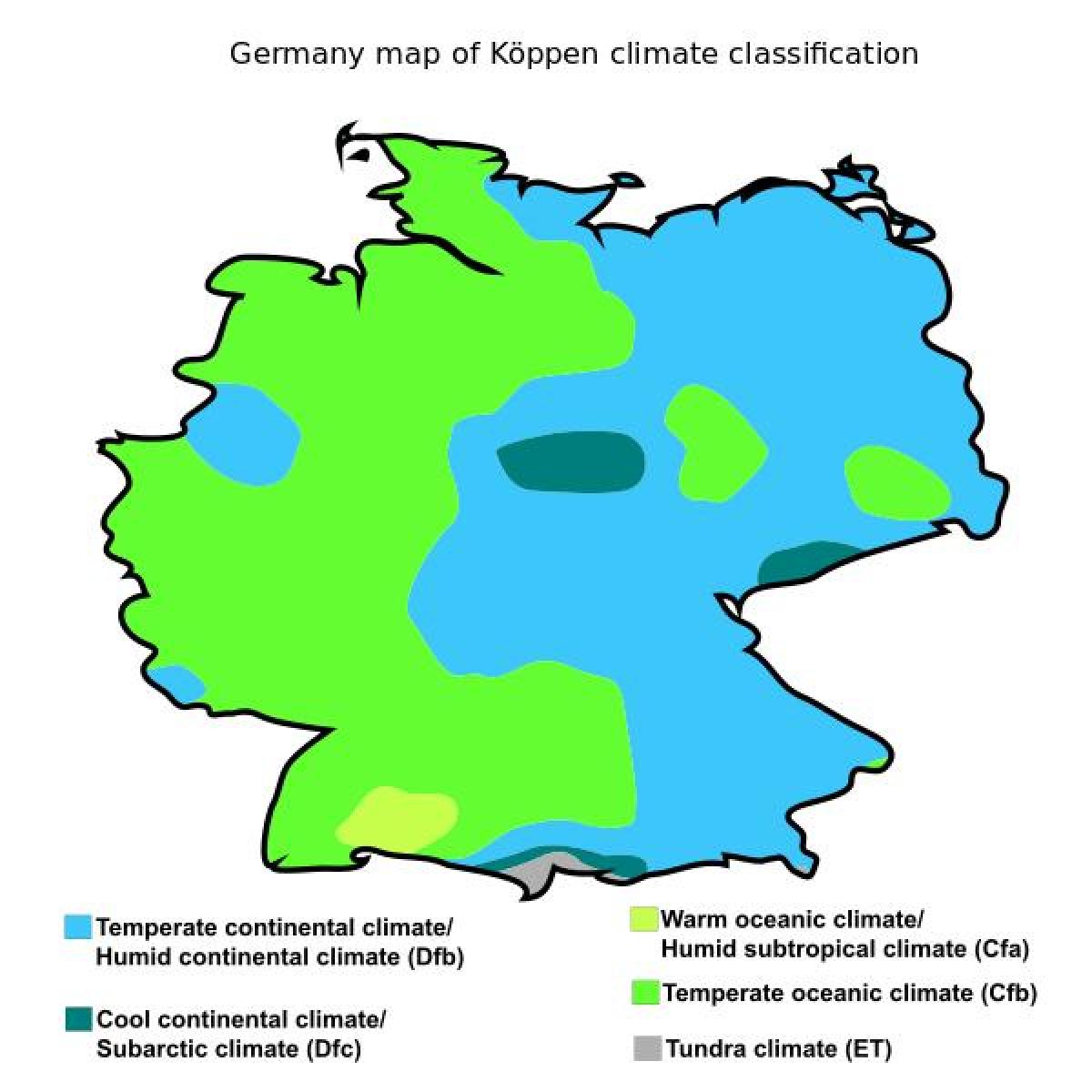search
Germany climate map
Map of german climate. Germany climate map (Western Europe - Europe) to print. Germany climate map (Western Europe - Europe) to download. Germany climate is temperate and marine, with cool, cloudy, wet winters and summers and in the south occasional warm föhn wind. The greater part of Germany lies in the cool/temperate climatic zone in which humid westerly winds predominate. In the northwest and the north the climate is extremely oceanic and rain falls all the year round as its shown in Germany climate map. Winters there are relatively mild and summers comparatively cool. In the east the climate shows clear continental features; winters can be very cold for long periods, and summers can become very warm. Here too, long dry periods are often recorded. In the centre and the south there is a transitional climate which may be predominantly oceanic or continental, according to the general weather situation. Winters are mild and summers tend to be cool, though maximum temperatures can exceed 30 °C (86 °F) for several days in a row during heat waves.
Seasonal climate is subject to great variations from year to year. Winters may be unusually cold or prolonged, particularly in the higher elevations in the south, or mild, with the temperatures hovering only two or three degrees above or below the freezing point as you can see in Germany climate map. Spring may arrive early and extend through a hot, rainless summer to a warm, dry autumn with the threat of drought. In other years, spring—invariably interrupted by a frosty lapse in May, popularly known as die drei Eisheiligen (“the three ice saints”)—may arrive so late as to be imperceptible and be followed by a cool, rainy summer. One less-agreeable feature of the German climate is the almost permanent overcast in the cool seasons, only infrequently accompanied by precipitation; it sets in toward the latter part of autumn and lifts as late as March or April. Thus, for months on end, little sunshine may appear.
Despite Germany generally temperate climate, there are specific regional patterns associated with temperature, frequency of sunshine, humidity, and precipitation. Germany northwestern and lowland portions as its mentioned in Germany climate map are affected chiefly by the uniformly moist air, moderate in temperature, that is carried inland from the North Sea by the prevailing westerly winds. Although this influence affords moderately warm summers and mild winters, it is accompanied by the disadvantages of high humidities, extended stretches of rainfall, and, in the cooler seasons, fog. Precipitation diminishes eastward, as the plains open toward the Eurasian interior and the average temperatures for the warmest and coldest months become more extreme.


